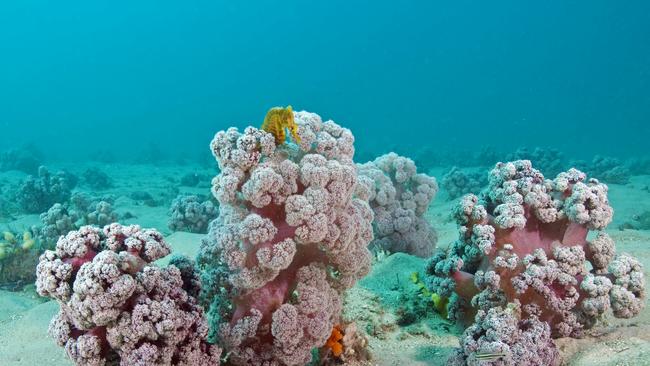SCU scientists: Purple Cauliflower Coral pushed closer to brink of extinction after recent flooding
The species is only known to exist in a small area, but SCU researchers were shocked to find high levels of run-off from recent flooding devastated the colonies.

Lismore
Don't miss out on the headlines from Lismore. Followed categories will be added to My News.
Purple cauliflower-like corals that delights divers are in significant decline, a Southern Cross University study has found.
Sand movement along with boat anchoring and moorings are the likely causes of the changes in waters near Newcastle.
Recent flooding has exacerbated the destruction of this soft coral which was recently listed as endangered.
The study found the Port Stephens’ clusters of Dendronephthya australis, mapped by the research team in 2019, had declined by almost 70 per cent in just eight years.
Researchers were also shocked to find high levels of run-off in the Karuah River catchment during the March 2021 floods has caused even further devastation of this population.
Port Stephens, north of Newcastle, is the only known location where this species is found in large, habitat-forming clusters.
The combined NSW Department of Primary Industries and Southern Cross University study, led by PhD researcher Meryl Larkin, has explored the potential causes for the decline of this ecologically unique soft coral species using innovative modelling methods.
“Although environmental conditions are still conducive to the presence of the corals within Port Stephens, this species has continued to decline. Modelling has shown there is a correlation between the loss of coral colonies over the past decade and sand movements within the estuary,” Ms Larkin said.
“While the models show that sand movement is likely to be a major contributing factor, many other factors can damage and kill colonies. Boat anchoring, moorings and fishing line have been observed impacting aggregations. There may also be other as-yet-undetermined factors at play, such as disease, pollution or other water quality issues contributing to their decline.”

The Cauliflower Coral is one of the few temperate water soft corals found in NSW.
The species is endemic to eastern Australia and it is only known to occur from Port Stephens to Jervis Bay.
Colonies of Cauliflower Coral not only provide shelter within their complex structure, but also support small crustacean (amphipod) communities, which are a key dietary component of many marine organisms.
The population of Dendronephthya australis in the Port Stephens-Great Lakes Marine Park was first officially mapped in 2011.
Due to the decline in its abundance and distribution, and its apparent geographic rarity, the NSW Fisheries Scientific Committee listed it as an Endangered species in February 2021.
The SCU study, titled The Rapid Decline of an Endangered Temperate Soft Coral Species, was published in Estuarine, Coastal and Shelf Science journal.




